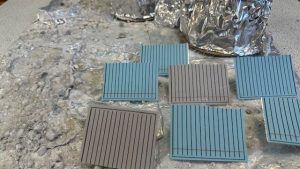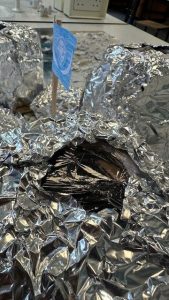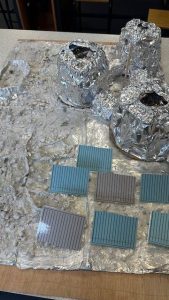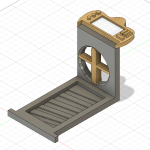Tally Hall’s moon base by Tally Hall
Escola secundária católica St Thomas more Crewe Crewe-Cheshire Reino Unido 11 years old, 14 years old 5 / 3 Inglês Lua
Descrição do projecto
Our moon base has three domes which are a living quarter, farm, and a laboratory all of which are connected by tunnels. There are rovers, and a solar panel farm. We have thought about the many problems of making a moon base such no electricity and we have attempted to solve them to the best of our abilities.
Our domes are constructed out of the abundant material – moon dust. When sulphur purified from lunar soil bonds with aggregate, it forms lunar concrete. To add extra stability, we’ve planned on adding bamboo as its high fibres enable it to withstand compression over two times higher than concrete. Its tensile strength is close to steel and its fibres have a shear stress that is higher than wood. Its light weight combined with its flexural strength makes it an ideal choice. Bamboo can survive the harsh conditions of the moon and it’s considered to be the most efficient plant in removing carbon dioxide (CO2). It’s edible and can influence the astronauts’ moods as growing plants can make for an uplifting mental health activity. Each dome is planned to be 40 cubic metres, making the total three domes to be 120 cubic meters. To reduce the impacts of solar wind and space debris, the domes are built in a spherical shape and are quite thick. If any damages were to occur, we have a bamboo farm that can provide us with enough bamboo for immediate repairs. Each dome has hydrogen-rich shielding to block a spectrum of radiation and has a radiation- resistant lead glass which allows scientists to be able to see space and its wonders. There are fans to combat the capricious temperatures that can spike to 121 degrees Celsius in daylight, then plummet after nightfall to -133 degrees Celsius.
Our first dome, our living quarters, includes a kitchen, bedroom, bathroom, and living room. Earth bedding, water-recycling technology, bamboo furniture, and ample space create a comfortable, social environment in space.
In the second dome, we cultivate crops like bamboo, potatoes, mushrooms, chickpeas, and wheat, providing essential nutrients and feed for chickens. Fertilized by compost, moon dust, and waste, crops thrive under artificial light. Chickens roam freely, producing meat, eggs, and feathers, supporting our sustainable food production.
The last dome is a laboratory that contains all the equipment for research and more. This is necessary as we cannot conduct experiments and more without a proper, vast lab that’s suitable for all our needs.
Due to temperature and radiation concerns, space suits utilize aluminium mylar for insulation and protection. Fans powered by kinetic energy mitigate overheating, while protective visors shield against abrasive lunar dust. Rovers equipped with tracks and drills enable surface exploration and resource collection, powered by collected hydrogen. Solar panels, generating 2,000 gigawatts of power in space, meet energy demands for essential functions. Abundant lunar resources like uranium and gold support base operations, facilitating electronics production and nuclear power generation. Oxygen production via electrolysis relies on lunar carbon, ensuring self-sufficiency in vital resources.
#Artes e ofícios
Outros projectos
Más allá de las estrellas, buscando un nuevo Hogar




































